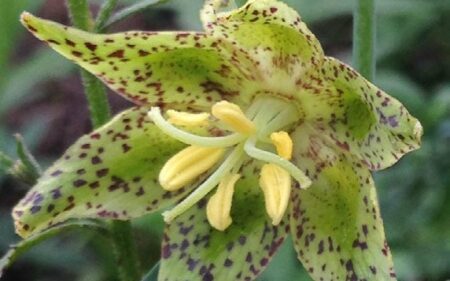Santa Barbara Botanic Garden Plant Anatomy Lab
Situated in a small, unassuming room on the west side of the Garden is a tiny laboratory that has made an outsized impact on the way scientists view the world. Exaggeration? Not really – for over 25 years the Garden’s Plant Anatomy Lab has served as the home base for the pioneering anatomical work of Research Associate Dr. Sherwin Carlquist (1930 – 2021) and others. Sherwin took up residence at the Garden following his retirement from Claremont University in 1993. From that time until his death at 91 years old, Sherwin and colleagues published over 179 papers using data generated mostly from this humble space. Sherwin’s obituary in the Independent does a wonderful job describing his contributions to science, art, and humanity.
So, what’s in the Plant Anatomy Lab?
This tiny room contains nearly all the tools that a botanist needs to explore the microscopic, inner-workings of a plant. Sherwin primarily focused on plant vasculature – the tiny tubes that convey water and minerals from the roots to the shoots (the xylem), as well as those that bring the sugars made in the leaves via photosynthesis to the rest of the plant (the phloem) (Photo Panel 1). While describing and contextualizing this ‘plant plumbing’ across global plant biodiversity was one of Sherwin’s main focal areas, the approach works equally well for investigating other plant parts (e.g., flowers). Standard anatomical apparatuses are delightfully steampunk: hand-driven cranks; clamped wood samples gliding on oil-redolent frames to slice thin bits of wood using hand-ground blades; 1950s-era metal slide warming trays. A few images of these tools of the trade are shown in Photo Panel 2.


Cheek by jowl with these standard, anatomy lab mainstays sits the Garden’s scanning electron microscope (SEM; Photo 3). Traditional light microscopy is ideal for exploring somewhat larger (small) objects, but the SEM takes over for the truly minute, where magnifications of 5,000 to 10,000 times or more might be required. The SEM focuses a narrow beam of electrons on a gold-coated sample placed under vacuum, with sensors interpreting electron scatter to reveal the surface of the sample in exquisite detail. Here’s a quick YouTube video that explains how an SEM works. Photo Panel 4 shows a few images generated by Garden scientists using our SEM.


The tools and techniques employed in the Plant Anatomy Lab are as relevant today as when the space was repurposed by Sherwin in the mid-1990s. Garden scientists in the Conservation & Research Department continue to use this lab to investigate many aspects of plant morphology and anatomy. A few recent studies highlight the on-going importance of this space to our work. Over the summer of 2022, Garden Conservation Intern Julia Thompson, guided by the Biodiversity Team and collaborators, investigated the cause of apparent reproductive failure in the chaparral pea (Pickeringia montana), which no longer produces seed in some parts of its range. Julia used the anatomy lab to assess chaparral pea’s pollen fertility, corroborating earlier preliminary observations that non-fruit-producing populations also tend to have reduced pollen fertility. With a better understanding of the cause of reproductive failure in-hand, botanists may now be able to design an intervention to prevent local extirpation of the species. Julia presented our findings at the 2022 Southern California Botanists Symposium, where her presentation won first place in the poster contest. Photo 5 shows our poster.

Conservation Genetics Laboratory Technician Caitlin Hazelquist is using the SEM in the Plant Anatomy Lab to study the microscopic leaf features of the endangered Santa Rosa Island endemic plant, soft-leaved paintbrush (Castilleja mollis). As the common name may suggest, this species has leaves clothed by a velvety-soft layer of intricately-branched hairs, a potential adaptation to the maritime environment where it grows. The SEM is giving us an unprecedented view of the branching architecture of the hairs, which could help us to differentiate hybrids with a related paintbrush species. Since hybridization between soft-leaved paintbrush and close relatives may be accelerating with climate change, clear identification of hybrid plants in the field using leaf features is critical. Photo Plate 6 shows some of Caitlin’s gorgeous SEM images.


Excitingly, the lab is also being used by the Ecology Team, both to visualize microscopic structures using the SEM, and to use the lab’s chemical fume hood to chemically dry insects safely. Terrestrial Invertebrate Conservation Ecologist Zach Phillips envisions using the SEM to image the tiny features of some invertebrates that he studies, such as the ants of Santa Barbara County. Photo Panel 7 shows some of Zach’s recent SEM images, including an image at 1800´ magnification of one of the ant’s spiracles, which are small openings in the thorax and abdomen used for breathing. Inspiring stuff!
For more information on the Garden’s work in the Plant Anatomy Lab, please contact Tucker Plant Systematist and Herbarium Curator Matt Guilliams. | mguilliams@sbbotanicgarden.org.
 Donate
Donate




